The history of war is also a time of invention and the necessity to look for a battlefield edge. When a country is at war, it’s all hands on deck, and this means every idea is on the table. In the case of WW2 vehicles, if there was an opportunity to give one country an edge over another, it was certainly going to be considered.
The good news is that in some cases, prototypes did get rolled out to the battlefield but not all of them. Regardless of widespread use or not, these strange vehicles were not designed to make you look good. Instead, these vehicles were focused solely on winning the war. With this in mind, let’s take a look at the strangest WWII vehicles that were produced.
Gustav Gun
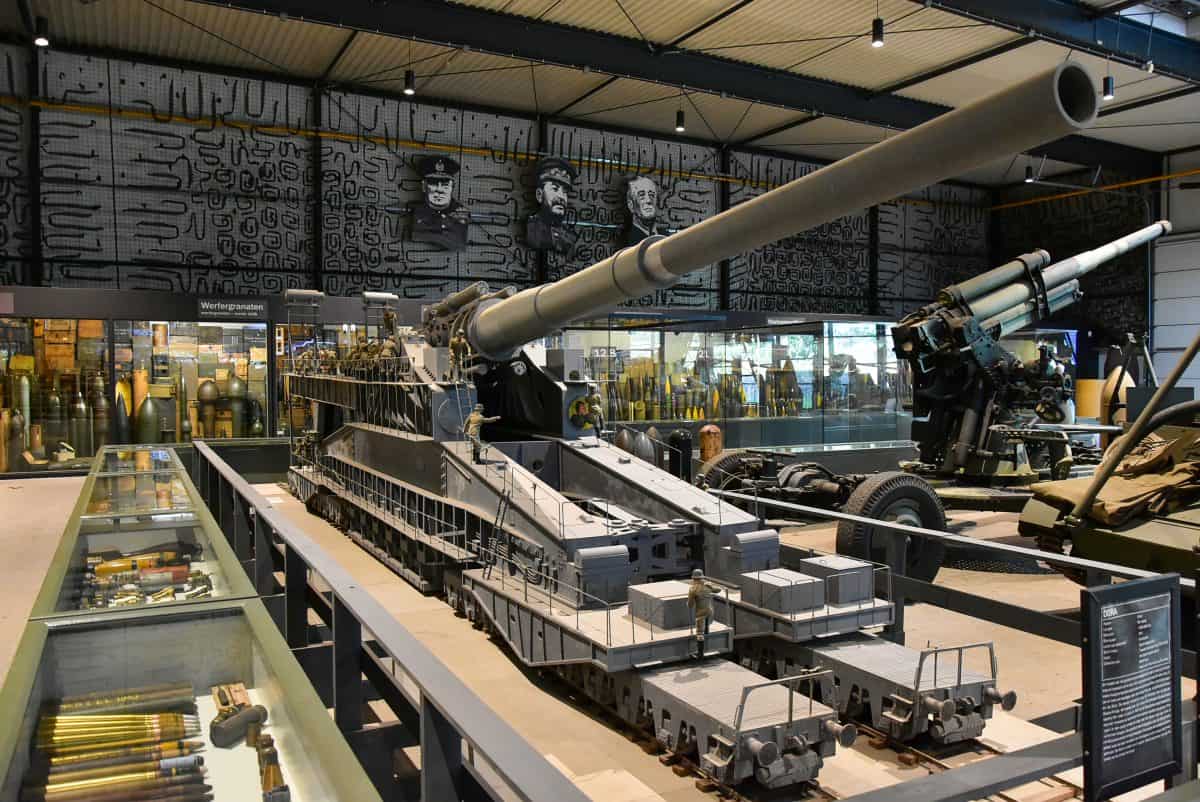
©Paul Hermans / Creative Commons Attribution-Share Alike 4.0 International license – Original / License
Best known as the Schwerer Gustav, this German weapon was developed in the 1930s with one objective in mind. Germany wanted a weapon that could pierce the strongest fortifications in France. At 155 feet long, with a 106-foot barrel, a train was the only practical way to move this weapon. This was also Gustav’s downfall as the Allies could easily target it when it was stationary.
The Carpet Layer
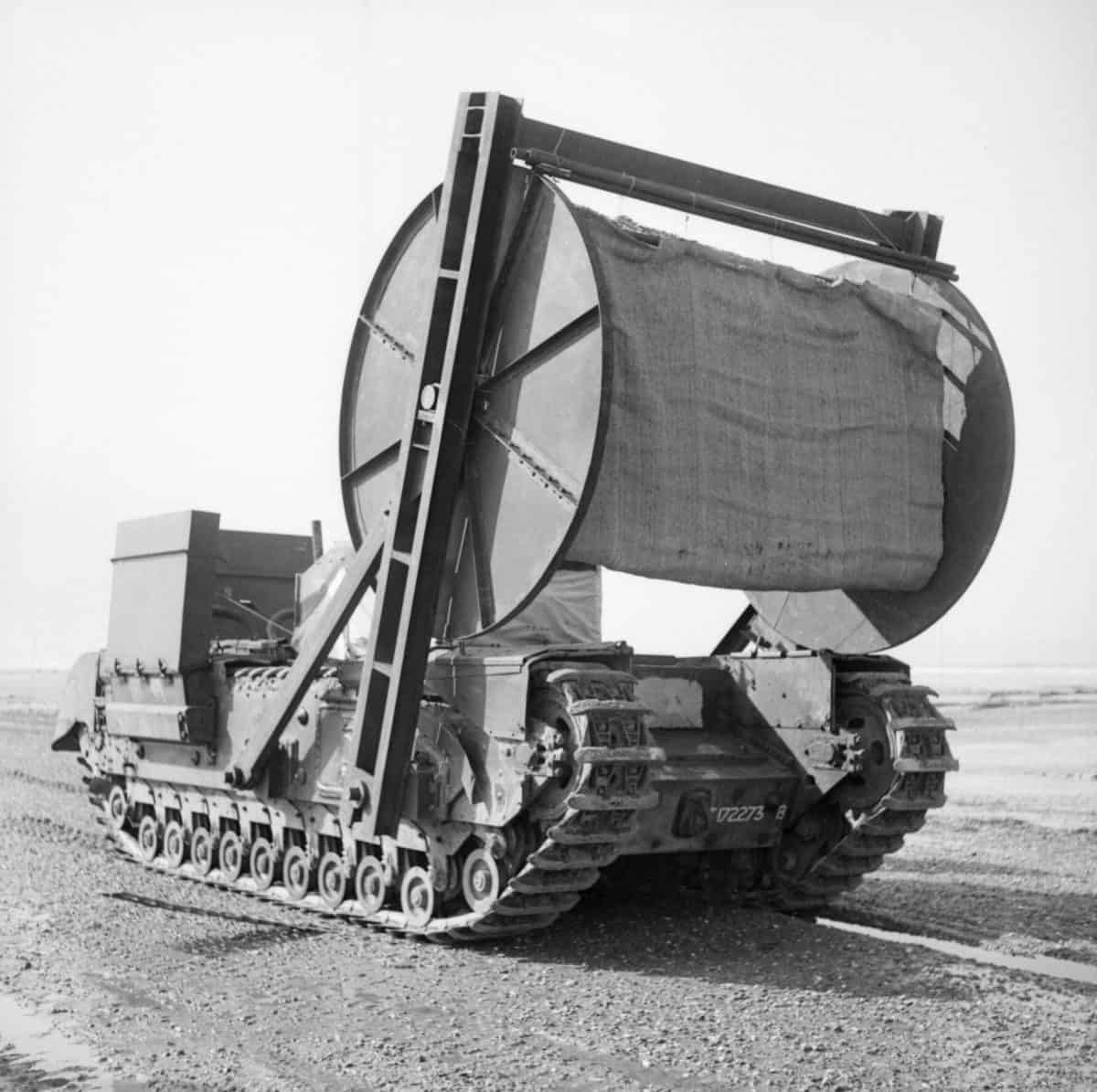
©War Office official photographer, Laing / Public Domain – Original / License
One of the strangest looking WWII vehicles ever, the “Bobbin” carpet layer was very unique. Created by the British to help support beach landings for armored vehicles, it essentially laid carpet on beaches. On top of its carpet-looking roller, the Bobbin also had extended radiator intakes and exhausts so it wouldn’t get waterlogged when making amphibious landings.
Doodlebug
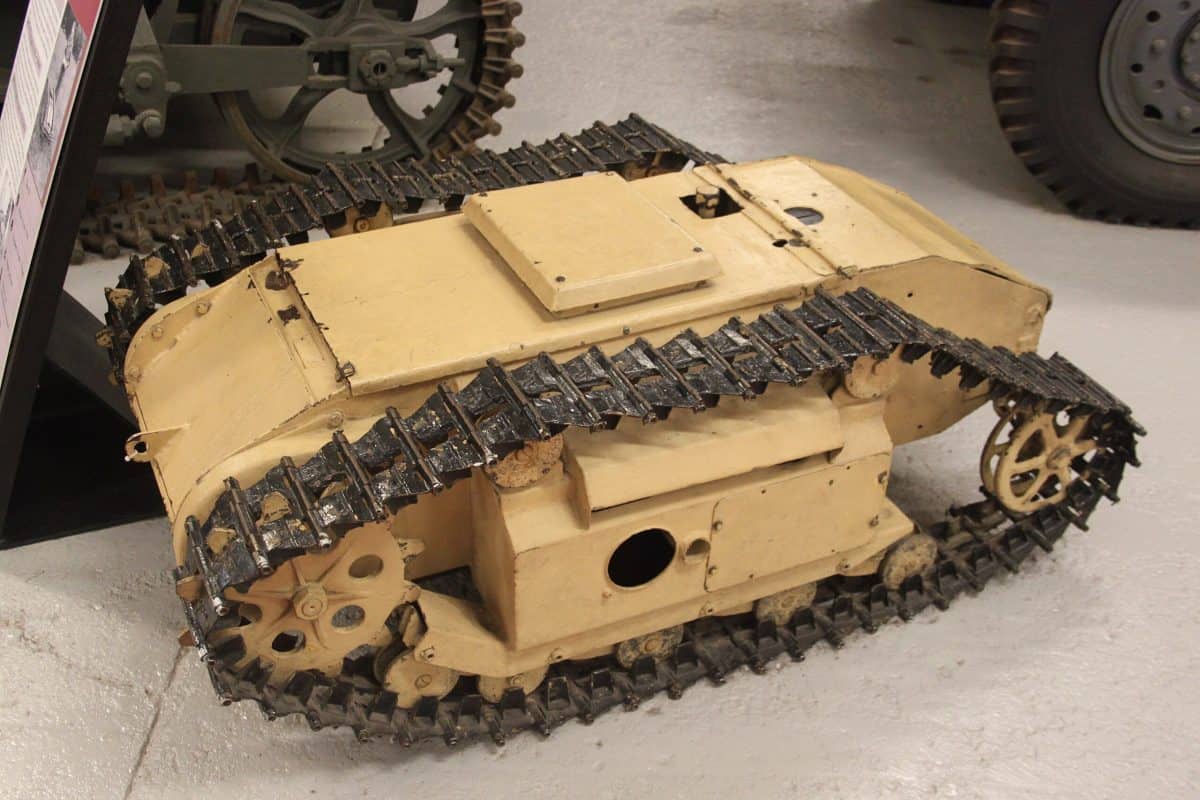
©Rodw / Creative Commons Attribution-Share Alike 4.0 International license – Original / License
Known as a “Doodlebug” by Allied forces, the German Goliath was one strange-looking mini-tank. While its design might be strange, the Goliath was also a dangerous unmanned vehicle. These Doodlebugs were remote-controlled and could carry either 130 or 220 pounds of explosives. The Germans used them to infiltrate Allied positions to destroy tanks and bridges.
Kettenkrad
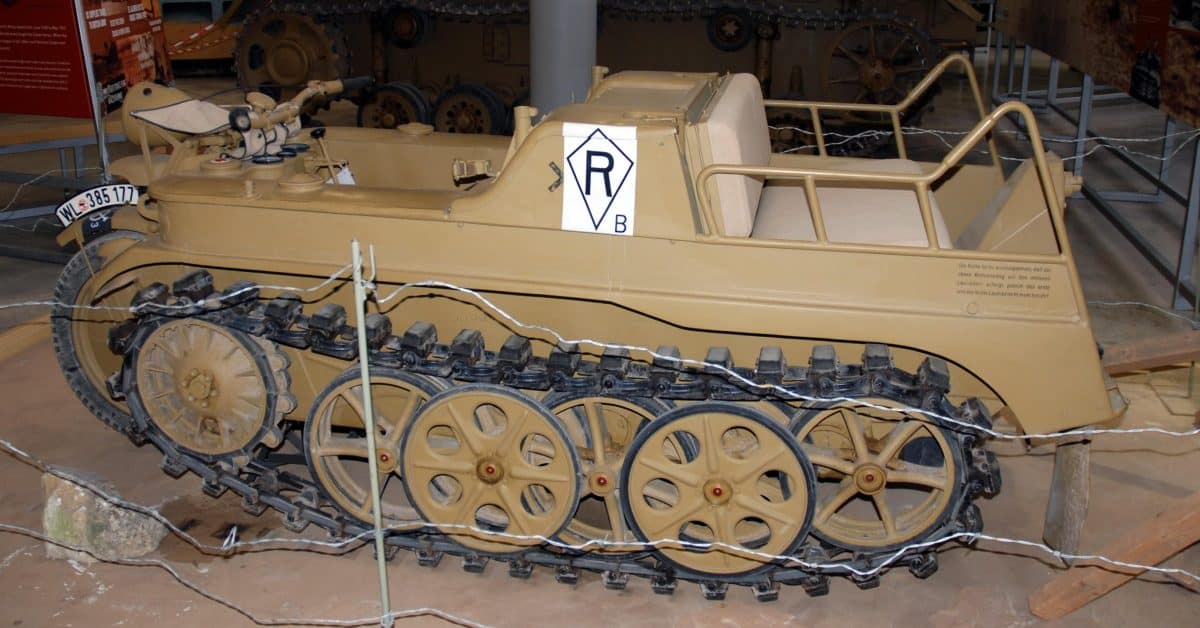
©Roland Turner / Creative Commons Attribution-Share Alike 2.0 Generic license – Original / License
This strange-looking vehicle went by multiple names with more than 8,000 produced by Germany. Best known as the Kettenkrad, it was a half motorcycle, half tank off-road vehicle. As the smallest mass-produced German vehicle during the war, it was essentially a motorcycle with handlebars and tank tracks instead of wheels.
Armored Ramp Carrier
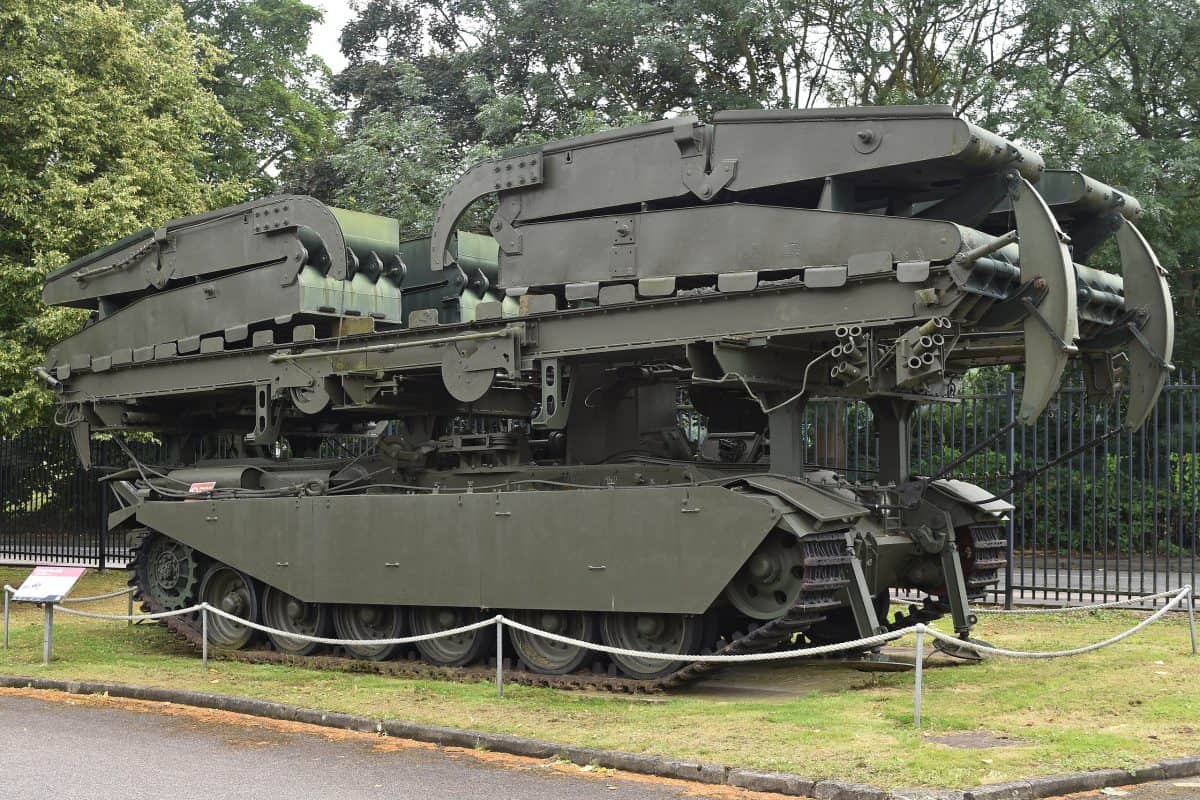
©Alan Wilson / Creative Commons Attribution-Share Alike 2.0 Generic license – Original / License
A modified version of the Churchill tank, the British used the Armoured Ramp Carrier or “ARK” with great success. To create the ARK, the British took an existing tank design, removed its turret, and replaced it with ramps that could create a 65-foot bridge. These tanks were used with great frequency in the Northern and Western European fronts.
Welbike
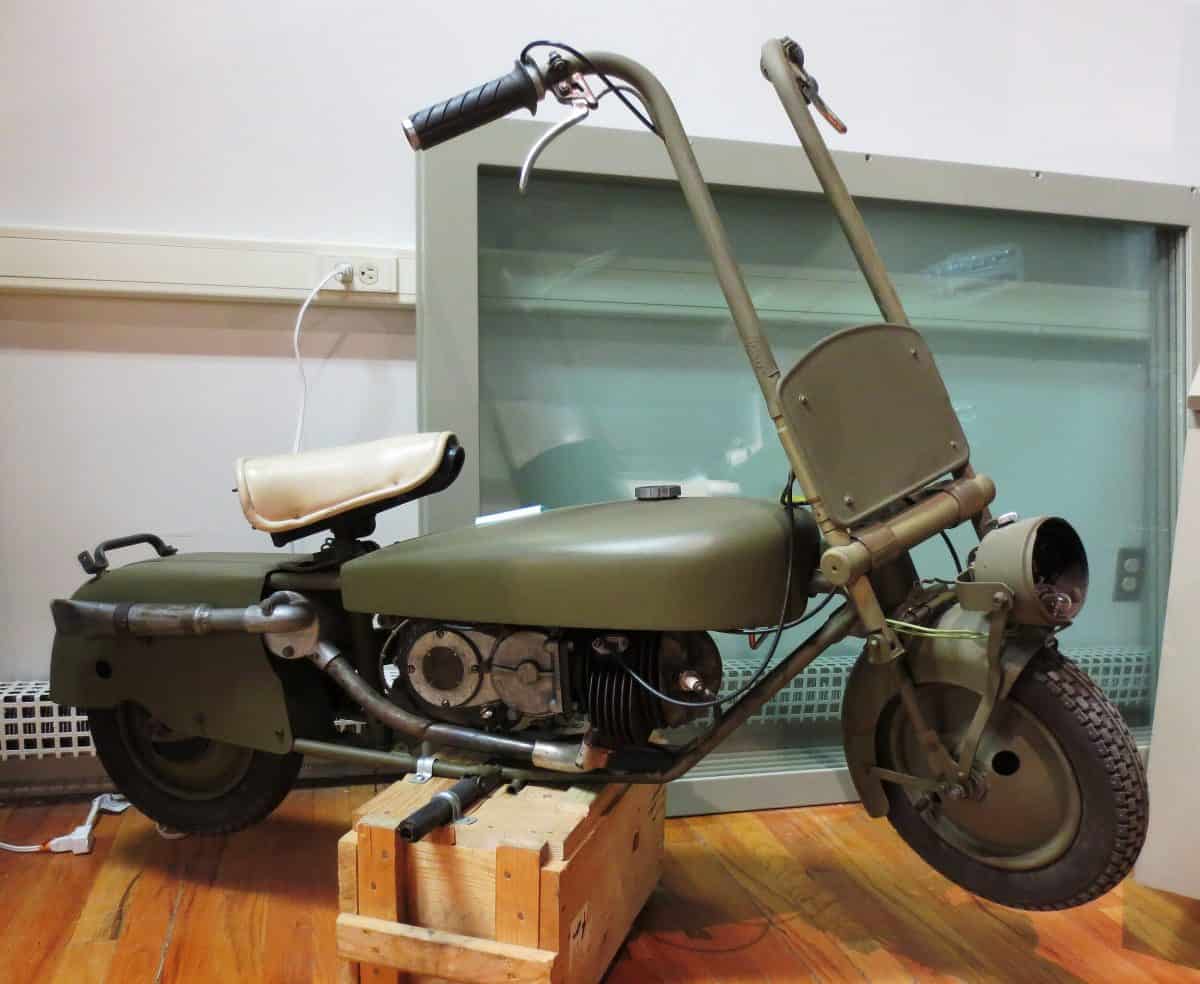
©Skaarup.HA / Creative Commons Attribution-Share Alike 4.0 International license – Original / License
As Allied paratroopers jumped into France to liberate the country, they did so with different supplies. Along with food, water, and firearms, many dropped with a Welbike. A strange-looking foldable motorcycle, these were built specifically to jump from airplanes. The highlight of the design is that Allied soldiers could have a Welbike unpacked and operational in under 11 seconds.
Churchill Crocodile

©Schierbecker /Creative Commons Attribution-Share Alike 4.0 International license – Original / License
Something of a modified tank and a weapon built for psychological warfare, the Churchill Crocodile was a very strange vehicle. The British Army took an existing Churchill tank and added a flamethrower in place of its big gun. With a range of 120 yards, the Crocodile was a standout weapon in WW2 for clearing German bunkers and trenches.
Sherman Crab

©Makizox / Creative Commons Attribution-Share Alike 4.0 International license – Original / License
Also known as the Mine Flail, the converted Sherman tank was first put into operation in WW2. Based on the M4 Sherman, the “Crab” had heavy chains that would rapidly turn on two arms in front of the tank. As the rotors spun, the chains would pound the ground to mimic the weight of people causing mines to detonate.
Standard Beaverette
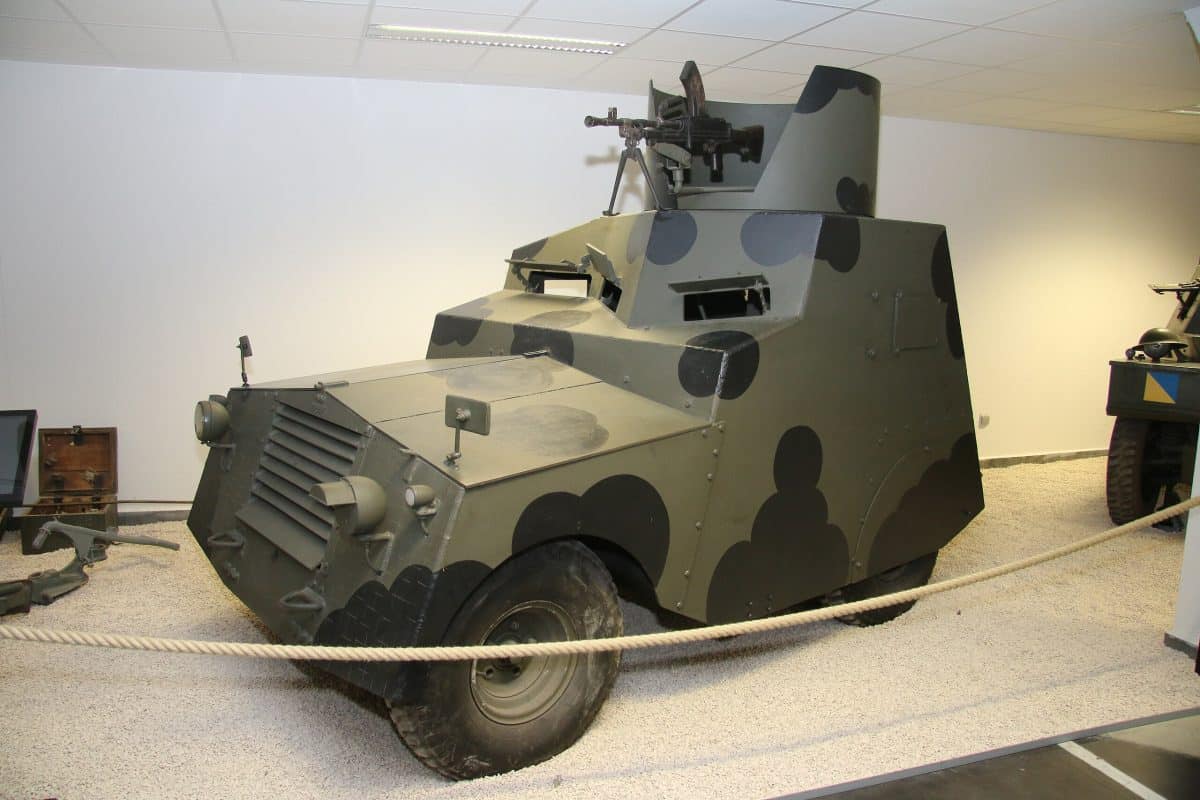
©Lars Seifert-Thorsen / Creative Commons Attribution-Share Alike 4.0 International license – Original / License
A unique design from the British Army, the Beaverette was an improvised armored car. With an open hull, the front of the vehicle had a mounted machine gun. Strange design aside, the Beaverette was very fast but also an easy target. Its best defense was speeds up to 60 MPH allowing it to outrun enemy armor.
Schofield Tank
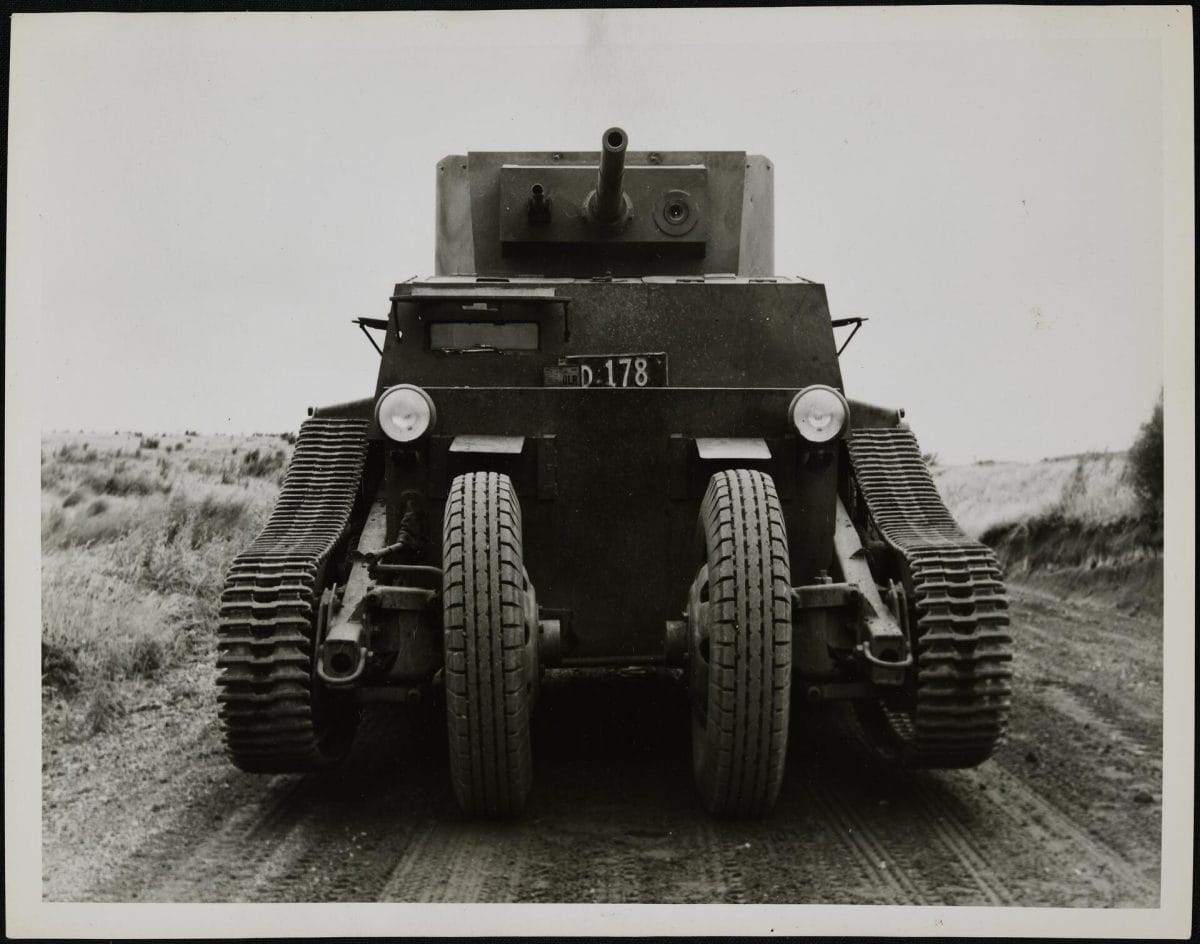
©New Zealand Military Forces / Public Domain – Original / License
New Zealand’s need to defend itself against Imperial Japan had it looking for defensive weapons. Enter the Schofield Tank prototype, one of the strangest WW2 tanks ever created. Designed by E.J. Schofield of General Motors, the tank used GM trucks as its base. It also had both tank tracks for rough terrain and wheels for roads. In total, the 30-horsepower engine could propel the tank up to 26 MPH.
The CDL
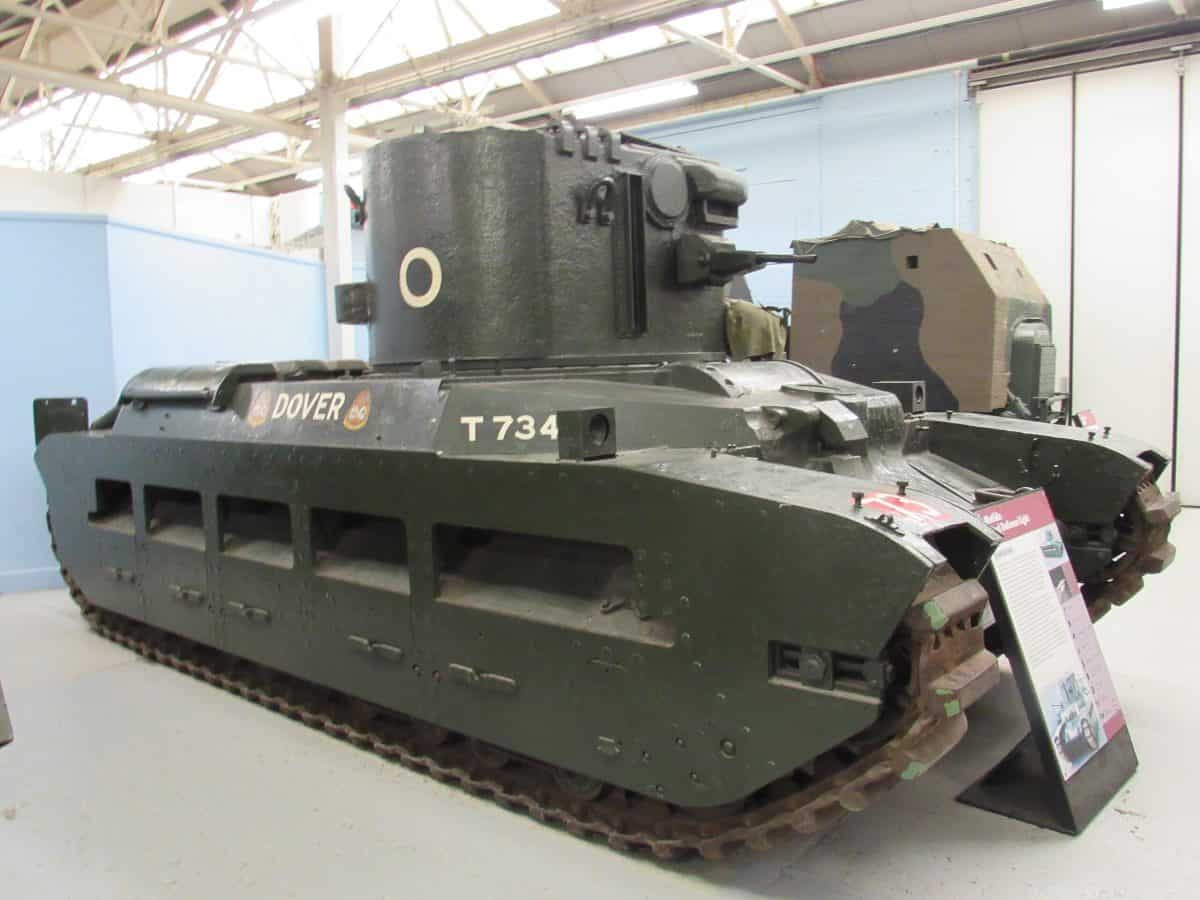
©Makizox / Creative Commons Attribution-Share Alike 4.0 International license – Original / License
A converted Grant tank, the Canal Defence Light had a spotlight instead of its turret. Used to provide light for night operations, the bright light on the CDL would be used to blind enemy forces and was aggressively used in the northwest European front. The CDL was a heavily guarded secret but saw lots of action.
Rhino Heavy Armoured Car
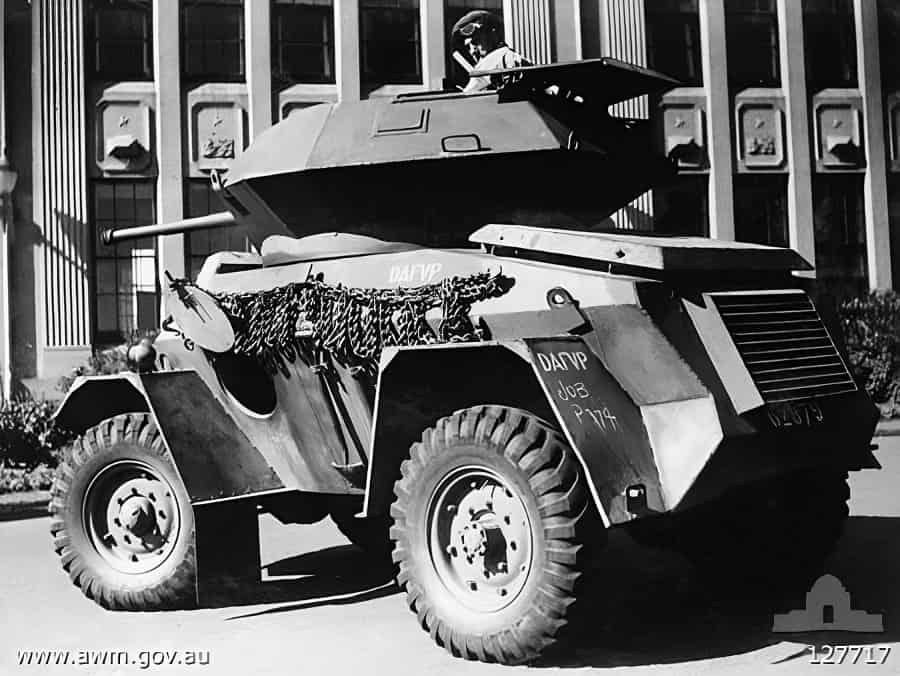
©Unknown Author / Public Domain – Original / License
Designed in Australia, the Rhino Heavy Armoured Car was mostly a WW2 prototype but was one weird design. Unfortunately, the design of the vehicle was excessively heavy and the project was canceled. However, its bullet-proof plating allowed the Rhino to offer both offensive and defensive opportunities.
Panjandrum
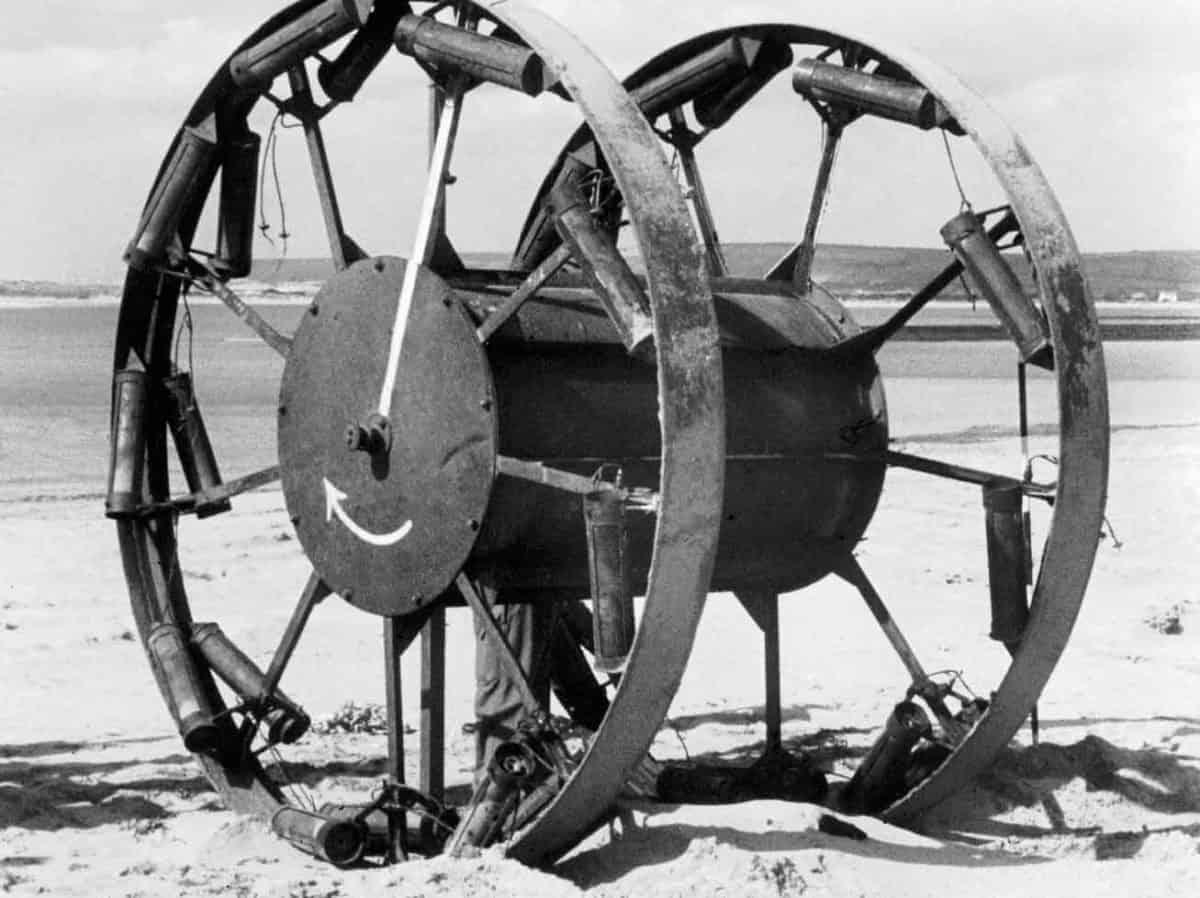
©British Government / Public Domain – Original / License
Known as The Great Panjandrum, this British-designed explosive cart was an experimental project. While it wasn’t used in battle, the design would have been effective at adding explosives to walls. The wheels were 1 foot wide and 10 feet tall with cordite rockets attached to each wheel. At top speed, the Panjandrum would have moved at 60 MPH to help it crash through any obstacle.
Fugo Balloon Bomb
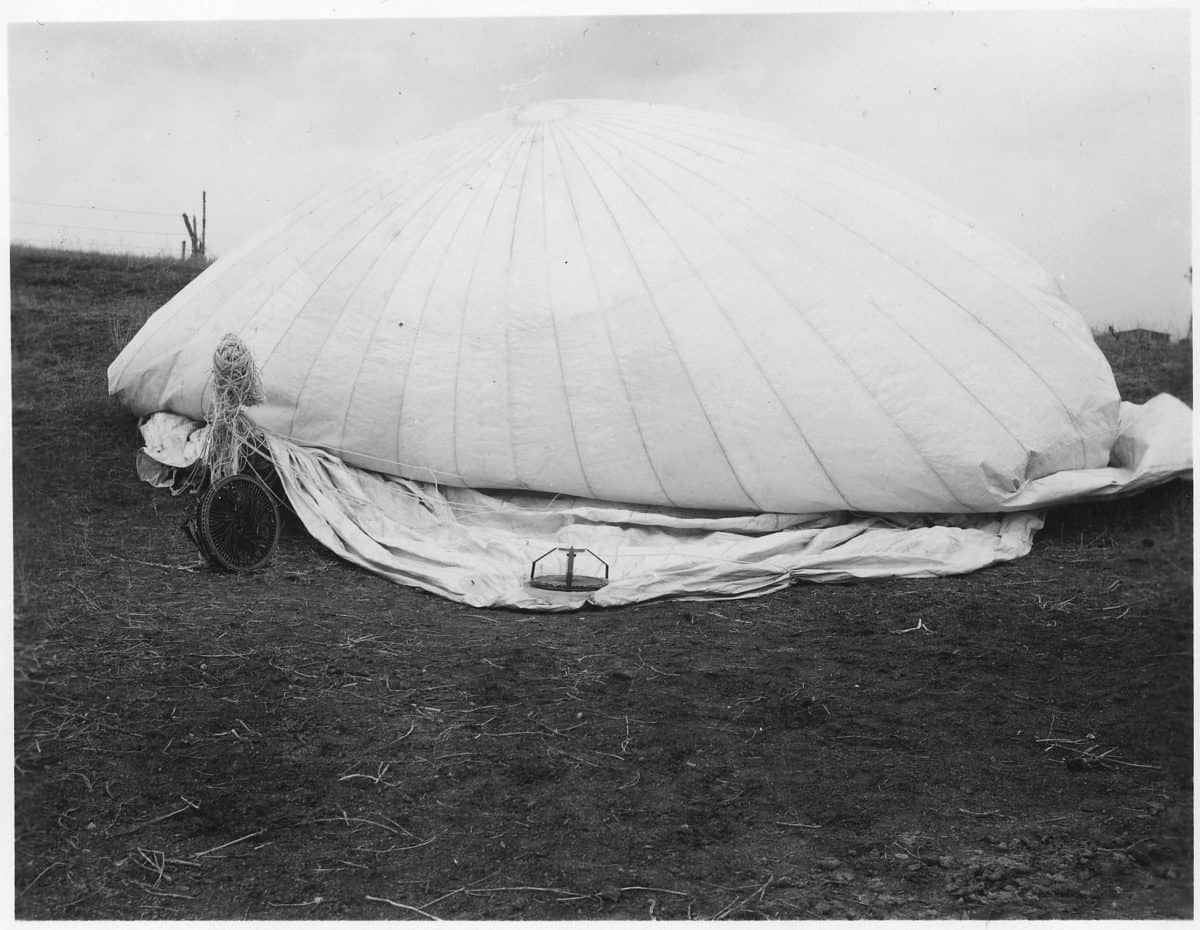
©U.S. National Archives and Records Administration / Public Domain – Original / License
By November 1944, Japan was looking to directly attack the U.S. mainland. This led to the development of the Fugo Balloon Bomb. Made out of the bark of a mulberry tree, the balloons were 33 feet in diameter and weighed up to 1,000 pounds. With only 82 minutes of travel time before detonating, only one was said to have reached Oregon where it killed six people on a Sunday fishing trip.
Praying Mantis
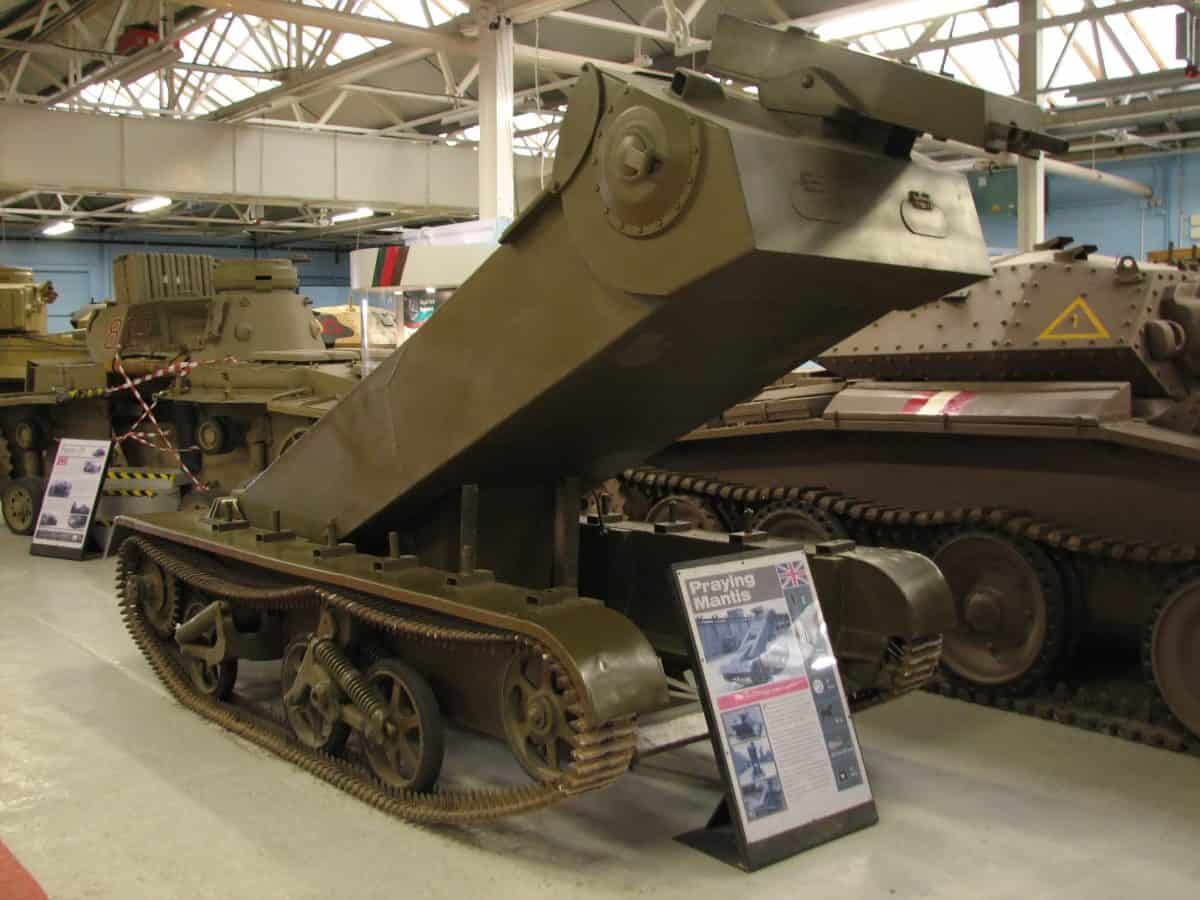
©Hohum / Creative Commons Attribution 3.0 Unported license – Original / License
Built on the chassis of the British Universal Carrier, the Praying Mantis was one of the strangest WW2 vehicles. With a driver up front, a gunner would sit in a control box in the prone position. When the gunner wanted to raise the boom for the gun, the turret could be raised to 12 feet and add suppressive fire over infantry.